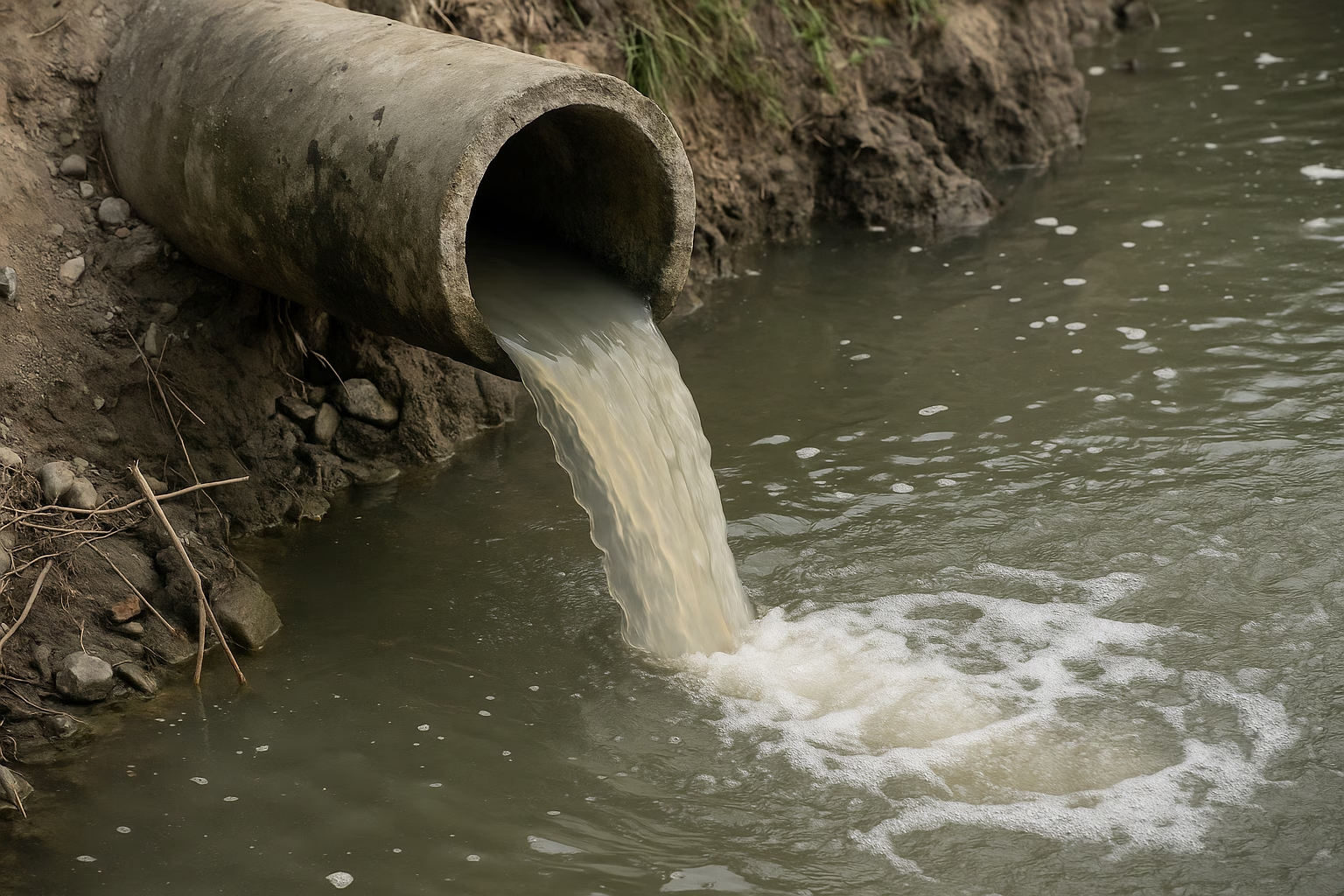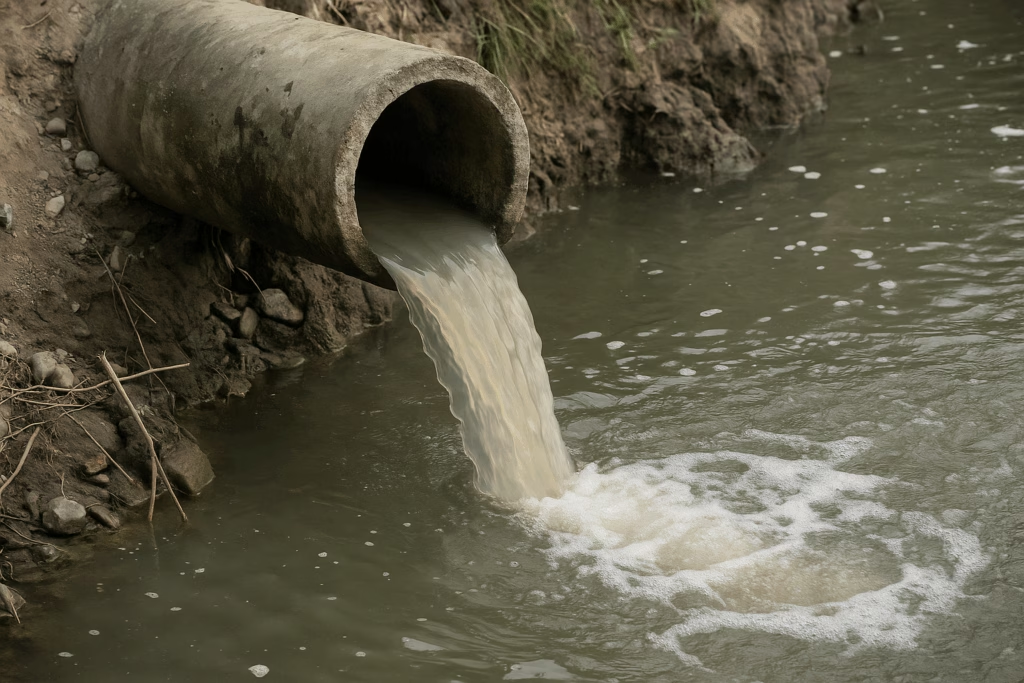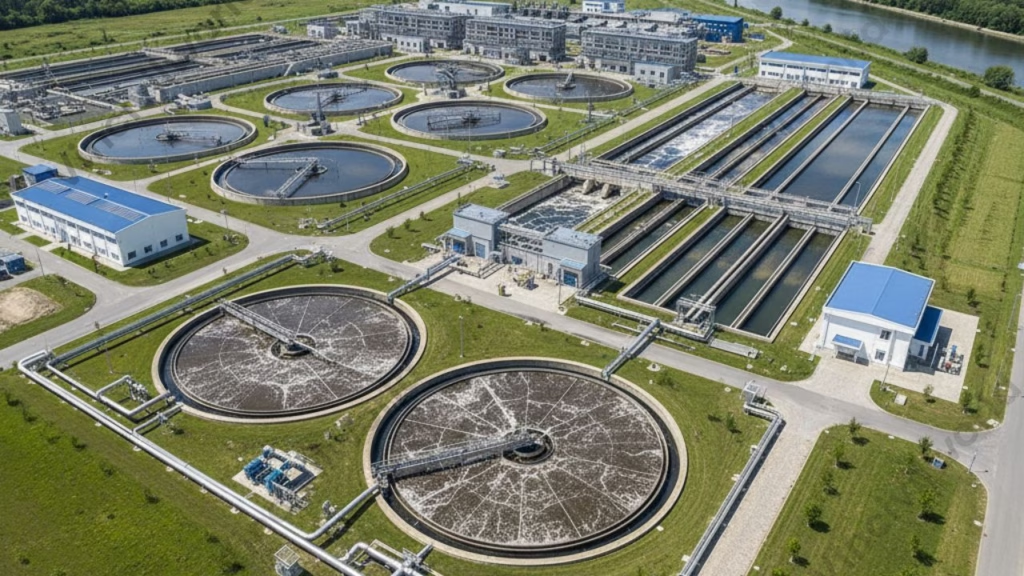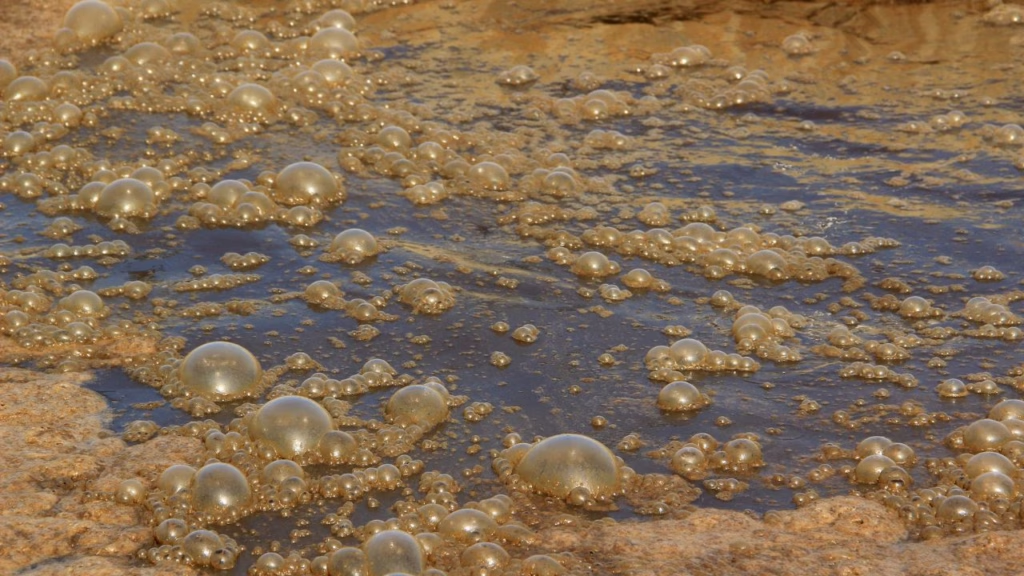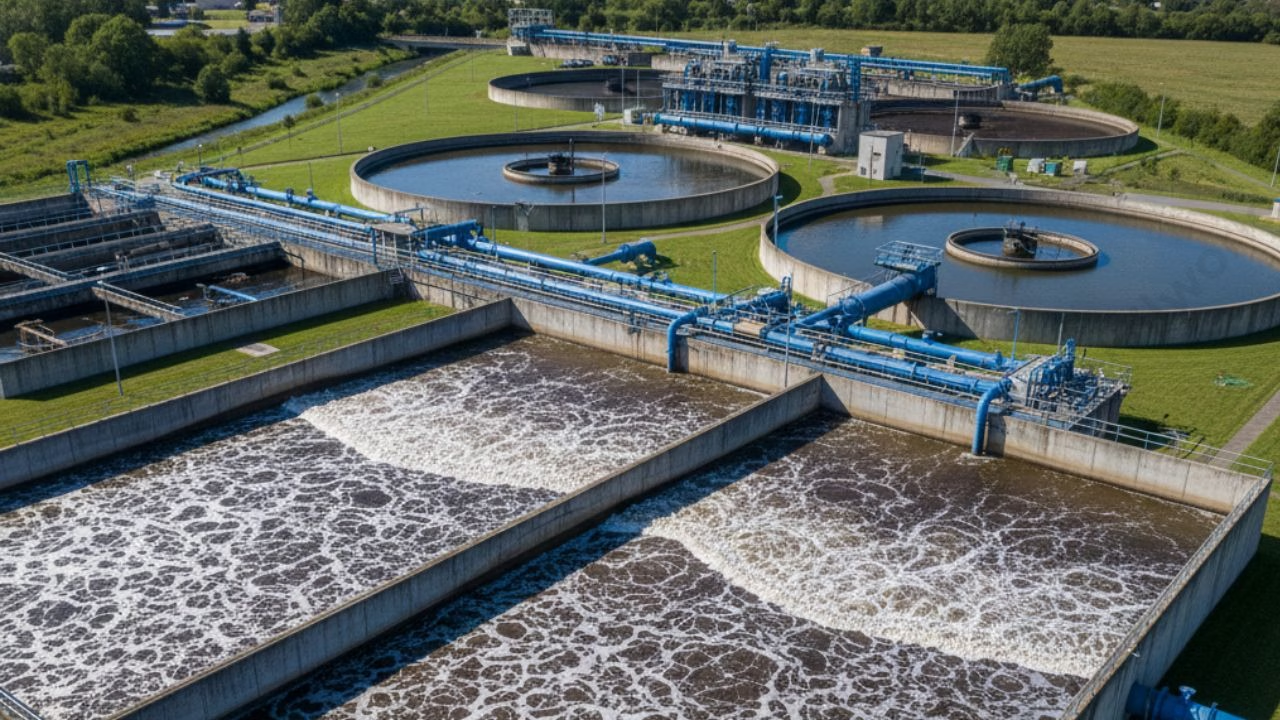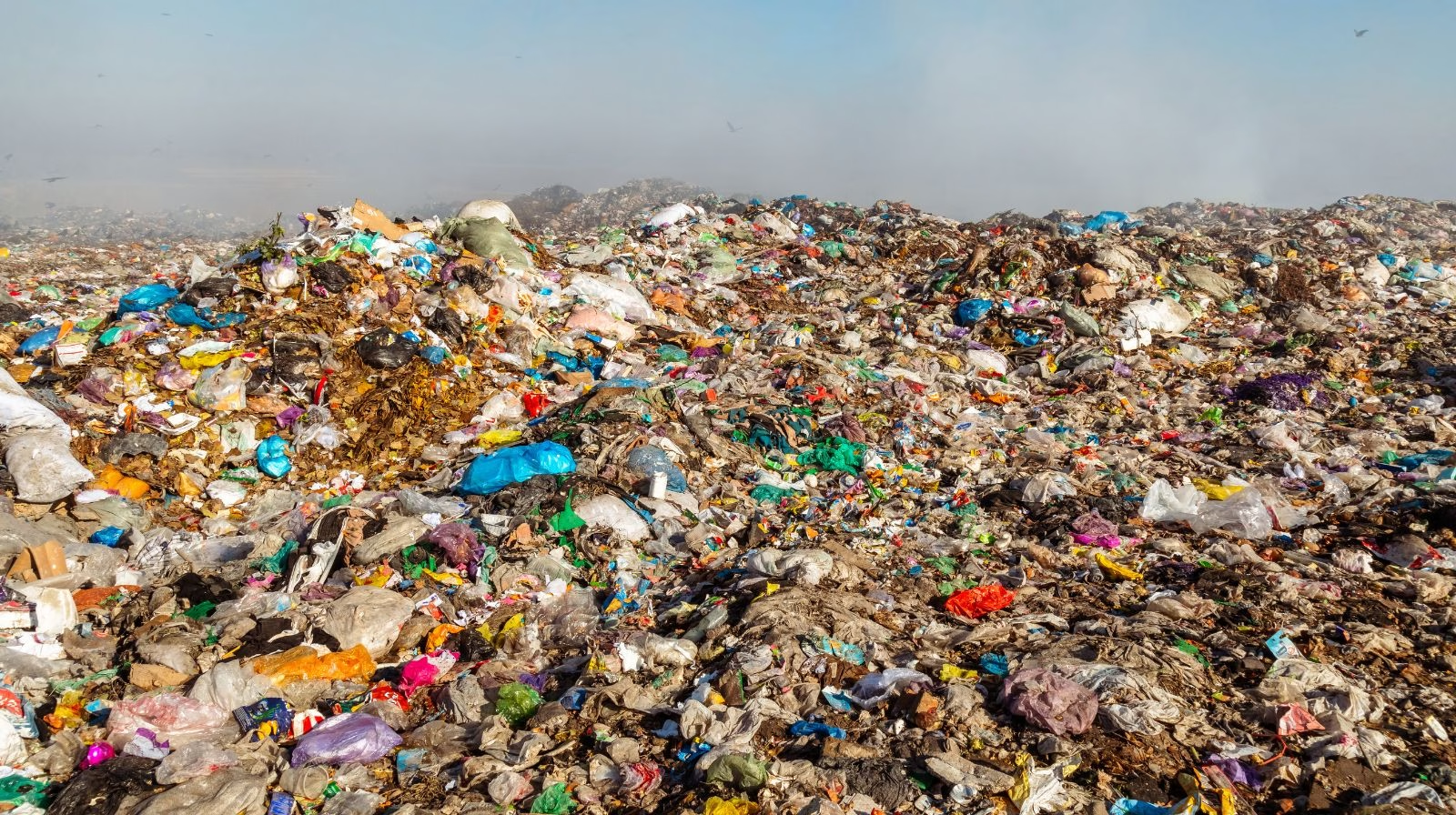What is Sewage? Sewage is the wastewater produced from homes, industries, commercial areas, and even stormwater entering the drainage network. It contains human waste, food residues, soaps, chemicals, oils, and harmful microorganisms that can pollute the environment if not treated properly. By identifying the types and sources of sewage, we can classify it mainly into domestic sewage and industrial sewage, each having different contamination levels. To protect public health and water bodies, the sewage treatment process removes pollutants through physical, biological, and sometimes advanced treatment methods. During treatment, important sewage quality indicators like BOD, COD, TSS, pH, and coliform bacteria are monitored to ensure standards are met. This article covers sewage meaning, where it comes from, how it is treated, and how its quality is evaluated for safe disposal or reuse.
Globally, 44% of sewage is not safely treated, according to UN-Water 2021. Releasing untreated sewage into water bodies pose a great threat to humans as well as the environment. But, how do we understand the quality and the number of pollutants in it? This blog let me walk you through the basics of sewage, its sources, types, and quality indicators.
Before heading onto the details about sewage, here are a few shocking facts about water pollution and its effects: Water Pollution – Effects and Causes. Going through this blog will help you better understand the importance of treating sewage.
Now, let’s get started.
Table of contents
What is sewage?
Sewage is a type of industrial and domestic wastewater that enters the sewerage system from household bathrooms, toilets, kitchens, laundries and drains. It consists of approximately 99.6% water and 0.4% of biodegradable pollutants and small solid particles. A sewage treatment plant considers the following parameters of sewage:
- The rate of flow
- Physical state
- Chemical and hazardous contents
- Bacteriologic status are all factors to consider (which organisms it contains and in what quantities).
Components of Sewage
The major components of sewage include:
- Greywater – wastewater from sinks, bathtubs, showers, dishwashers, and clothes washers
- Blackwater – wastewater from toilets, mixed with the human waste flushed away
- Soaps and detergents, and toilet paper
Also read: What are Water Pollutants? – Definition, Sources and Types
Sources and Types of Sewage
Sewage is generated from several daily domestic and industrial activities. To understand its characteristics and treatment needs, sewage is commonly classified into different Types of Sewage based on its origin. The major sources include:
Domestic Sewage (Household Wastewater)
Domestic sewage is discharged from kitchens, toilets, and washing activities, containing:
- Human excreta: faeces, urine, blood, sanitary waste
- Bathing and personal hygiene water
- Dishwashing, laundry, and floor-cleaning water
- Household liquids such as cooking oil, detergents, paints, lubricants, and pesticides
Industrial Sewage
Industrial sewage is mainly wastewater from factories and processing units, containing chemicals, dyes, oils, acids, and heavy metals.
Stormwater / Urban Runoff
Rainwater flowing from:
- Roads, railways, parking lots, pavements
- Roofs, gardens, fuel stations
Carrying oil spills, food waste, tyre rubber residue, metals, pesticides, and litter.
A clear understanding of these types of sewage sources helps engineers design the right sewage treatment process and improve public health and environmental protection.
Sewage Quality Indicators
Sewage quality indicators are laboratory tests that determine if wastewater is suitable for disposal, treatment, or reuse. These tests measure the physical, chemical, and biological characteristics of sewage. Physical characteristics don’t demand complex procedures since our physical senses alone can detect them. Bioassays and aquatic toxicity tests determine the biological properties while titrations and related laboratory procedures give the chemical characteristics.
Physical Characteristics
The physical characteristics can be detected using our senses such as sight, smell, and touch.
1️⃣ Temperature
The temperature of sewage indicates the level of contamination. It varies depending on biological and chemical reactions in the sewer or treatment plant. When sewage becomes septic, microbial activity increases the temperature. A drop in temperature can indicate groundwater infiltration.
2️⃣ Colour
Colour indicates the age and condition of wastewater. Fresh one appears light brownish-grey. Under anaerobic conditions, oxidation of organic matter turns the sewage from grey to dark grey or black. Black colour signals septic one.
3️⃣ Odour
Fresh sewage has a mild oily smell. Septic one produces a foul odour due to hydrogen sulphide (H₂S) formed under anaerobic decomposition. Industrial wastewater may contribute additional odorous compounds.
Odour measuring devices include:
- H₂S meter
- Olfactometer
- Scentometer
- Butanol wheel
4️⃣ Turbidity
Turbidity measures the ability of sewage to transmit light. Suspended and colloidal particles scatter or absorb light, increasing turbidity. High turbidity indicates poor wastewater quality and the presence of solids.
- Measure of light-transmitting property of water.
- Turbidity measurement involves comparing light scattered by sample to that by a reference suspension under same conditions.
- Colloidal matter absorb light and thus prevent transmission.
- Thus, if a sample doesn’t transmit light, it indicates that the sample is turbid due to presence of suspended and colloidal substances.
5️⃣ Solids
Solids are the residues left after evaporation and drying at 103.2°C. They include:
Solids are those substances that remain as residue after evaporation and drying at 103.20C.
Suspended particles are solids that have not dissolved in wastewater. Floatable solids or scum are suspended materials that float.
Settled solids, often known as grit or sludge, are suspended materials that settle. Settleable solids refer to the solids that settle at the bottom of an Imhoff cone after the water has settled for one hour. It is a measure of the quantity of sludge that can settle by primary sedimentation.
Volatile solids are solids that burn or evaporate at temperatures between 500°C and 600°C. In a wastewater treatment plant, the sediments provide food for bacteria and other living organisms and thereby they decompose the waste. The majority of organic substances included in municipal garbage come from living plants and animals.
Organic solids serve as food for bacteria during treatment and support biodegradation.
Chemical Characteristics
Sewage comprises both organic and inorganic compounds and numerous gases produced by decomposition, such as H2S, CO2, CH4, and NH3. pH, DO (dissolved oxygen), oxygen demand, nutrients, and hazardous compounds are chemical features of wastewater that are of particular interest.
1️⃣pH
The pH scale describes the acidity or alkalinity of aqueous solutions. Initially, the sewage has high pH. Further, the pH drops when it gets septic, and then rises again as it goes through the treatment process.
2️⃣Dissolved Oxygen (DO)
The term “aerobic” or “fresh” refers to wastewater that contains DO. At 1.0 atm pressure, oxygen solubility in freshwater ranges from 14.6 mg/L at 0oC to roughly 7 mg/L at 35oC.
3️⃣Biochemical Oxygen Demand (BOD)
BOD is the amount of oxygen that is necessary for the aerobic bacteria to decompose organic matter in a period of 5 days at a typical temperature of 20oC. We have a blog, Biochemical Oxygen Demand || Dissolved Oxygen of Water || Full Details which has all the topics that one should know about BOD. Don’t forget to check it out.
4️⃣Chemical Oxygen Demand (COD)
Laboratory analysts determine Chemical Oxygen Demand (COD) by oxidizing the organic matter in a wastewater sample using a strong chemical oxidant. The COD value represents the oxygen equivalent of all organic compounds in the sample that are susceptible to chemical oxidation, indicating how much oxygen would be required to break them down.
For more details: Chemical Oxygen Demand and Total Organic Carbon Analysis
Biological Characteristics
Bacteria, viruses, and parasites are the three biological entities found in wastewater.
Bacteria
The typical concentration of bacteria in raw sewage ranges from 500,000 to 5,000,000 per mL. With the help of external and intracellular enzymes, these bacteria are responsible for the breakdown of complicated molecules into stable chemicals. Bacteria can be classified into three types depending on their manner of action:
- Aerobic Bacteria
- Anaerobic Bacteria
- Facultative Bacteria
Along with bacteria, it also contains viruses, helminths, parasites etc.
Key Takeaways
- Sewage is wastewater from homes and industries, containing pollutants that can harm the environment if untreated.
- It mainly categories into domestic and industrial sewage, each with different contamination levels.
- Sewage quality indicators, such as BOD, COD, and pH, help evaluate its treatment needs and safety for disposal or reuse.
- Globally, 44% of sewage isn’t safely treated, creating significant health and environmental risks.
- Understanding sewage’s components and sources is essential for effective treatment and protecting public health.
Conclusion
Understanding What is Sewage ? is essential for effective environmental and public health protection. Sewage originates from many sources of sewage, mainly domestic and industrial sewage, and can contain harmful pollutants. By analyzing sewage quality indicators such as BOD, COD, TSS, pH, and coliform bacteria, engineers can assess pollution levels accurately. A well-designed sewage treatment process ensures the safe disposal or reuse of wastewater by removing physical, chemical, and biological contaminants. Proper wastewater treatment and pollution control techniques help maintain clean water bodies, prevent disease outbreaks, and support sustainable urban development. Continuous monitoring and advancements in treatment technologies remain crucial for improving sewage management and protecting our environment for future generations.

